Sharath M. Shankaranarayana
Constrained Monotonic Neural Networks
May 24, 2022
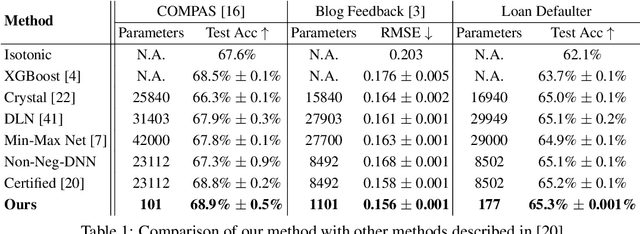
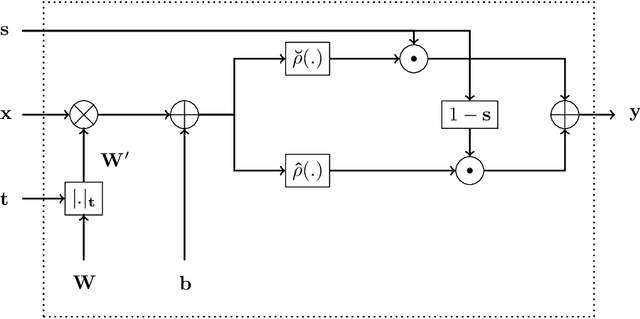
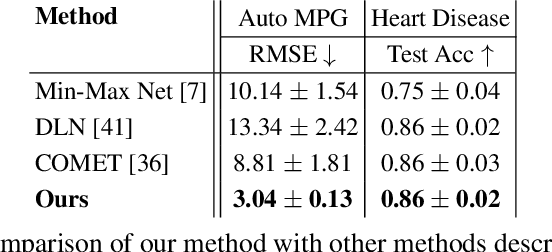
Abstract:Deep neural networks are becoming increasingly popular in approximating arbitrary functions from noisy data. But wider adoption is being hindered by the need to explain such models and to impose additional constraints on them. Monotonicity constraint is one of the most requested properties in real-world scenarios and is the focus of this paper. One of the oldest ways to construct a monotonic fully connected neural network is to constrain its weights to be non-negative while employing a monotonic activation function. Unfortunately, this construction does not work with popular non-saturated activation functions such as ReLU, ELU, SELU etc, as it can only approximate convex functions. We show this shortcoming can be fixed by employing the original activation function for a part of the neurons in the layer, and employing its point reflection for the other part. Our experiments show this approach of building monotonic deep neural networks have matching or better accuracy when compared to other state-of-the-art methods such as deep lattice networks or monotonic networks obtained by heuristic regularization. This method is the simplest one in the sense of having the least number of parameters, not requiring any modifications to the learning procedure or steps post-learning steps.
REFUGE Challenge: A Unified Framework for Evaluating Automated Methods for Glaucoma Assessment from Fundus Photographs
Oct 08, 2019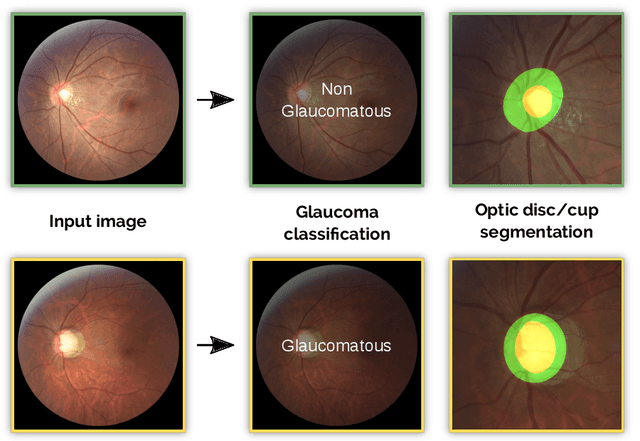
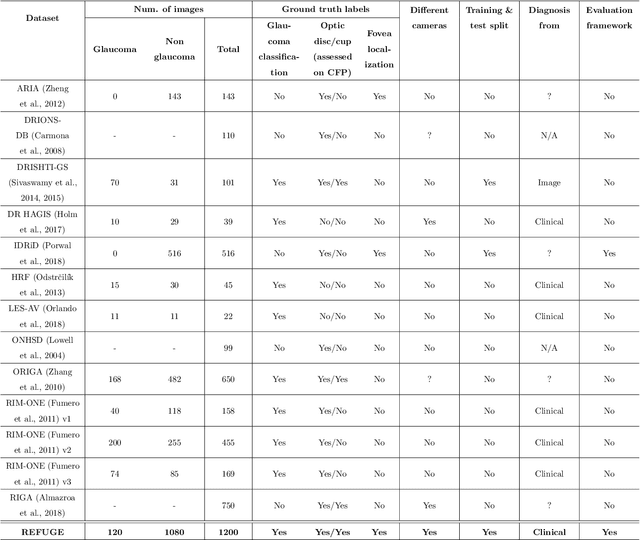

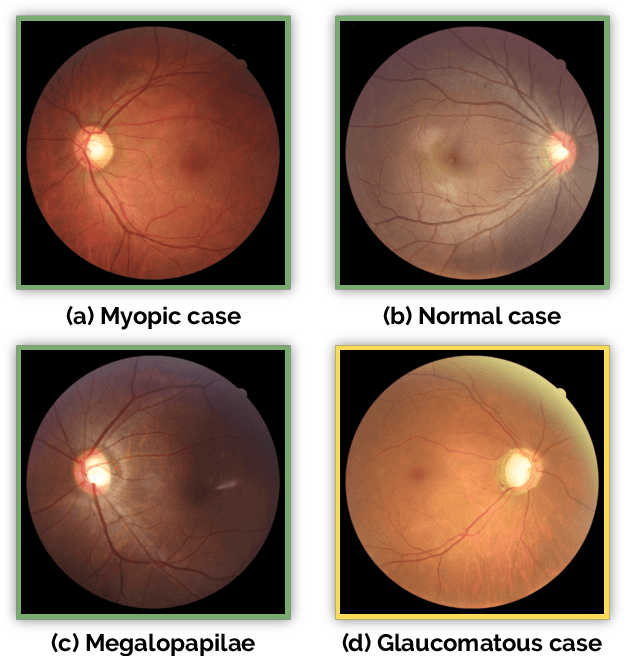
Abstract:Glaucoma is one of the leading causes of irreversible but preventable blindness in working age populations. Color fundus photography (CFP) is the most cost-effective imaging modality to screen for retinal disorders. However, its application to glaucoma has been limited to the computation of a few related biomarkers such as the vertical cup-to-disc ratio. Deep learning approaches, although widely applied for medical image analysis, have not been extensively used for glaucoma assessment due to the limited size of the available data sets. Furthermore, the lack of a standardize benchmark strategy makes difficult to compare existing methods in a uniform way. In order to overcome these issues we set up the Retinal Fundus Glaucoma Challenge, REFUGE (\url{https://refuge.grand-challenge.org}), held in conjunction with MICCAI 2018. The challenge consisted of two primary tasks, namely optic disc/cup segmentation and glaucoma classification. As part of REFUGE, we have publicly released a data set of 1200 fundus images with ground truth segmentations and clinical glaucoma labels, currently the largest existing one. We have also built an evaluation framework to ease and ensure fairness in the comparison of different models, encouraging the development of novel techniques in the field. 12 teams qualified and participated in the online challenge. This paper summarizes their methods and analyzes their corresponding results. In particular, we observed that two of the top-ranked teams outperformed two human experts in the glaucoma classification task. Furthermore, the segmentation results were in general consistent with the ground truth annotations, with complementary outcomes that can be further exploited by ensembling the results.
ALIME: Autoencoder Based Approach for Local Interpretability
Sep 04, 2019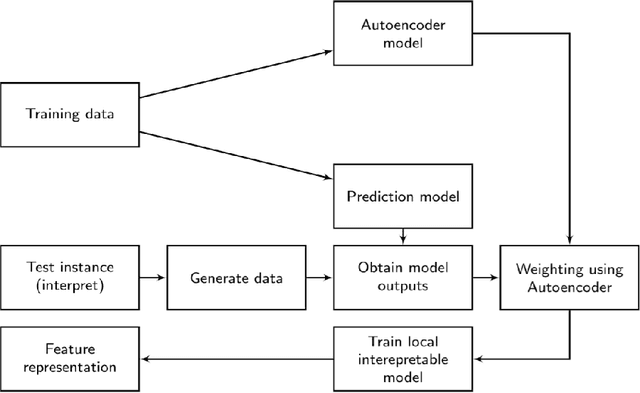
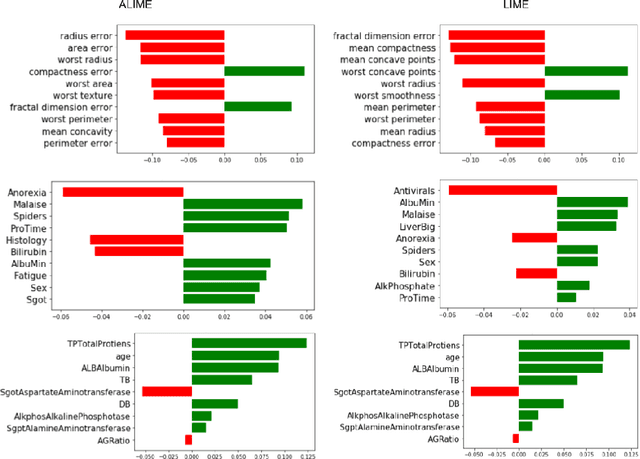
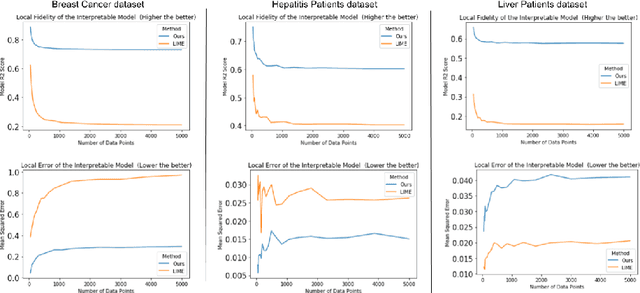
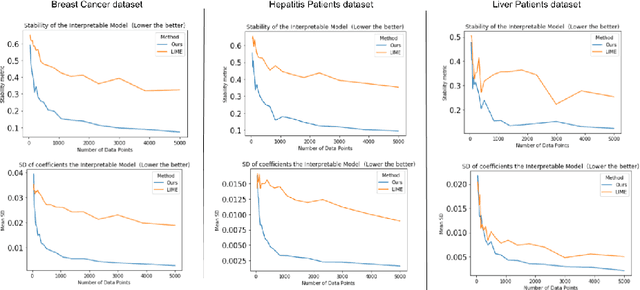
Abstract:Machine learning and especially deep learning have garneredtremendous popularity in recent years due to their increased performanceover other methods. The availability of large amount of data has aidedin the progress of deep learning. Nevertheless, deep learning models areopaque and often seen as black boxes. Thus, there is an inherent need tomake the models interpretable, especially so in the medical domain. Inthis work, we propose a locally interpretable method, which is inspiredby one of the recent tools that has gained a lot of interest, called localinterpretable model-agnostic explanations (LIME). LIME generates singleinstance level explanation by artificially generating a dataset aroundthe instance (by randomly sampling and using perturbations) and thentraining a local linear interpretable model. One of the major issues inLIME is the instability in the generated explanation, which is caused dueto the randomly generated dataset. Another issue in these kind of localinterpretable models is the local fidelity. We propose novel modificationsto LIME by employing an autoencoder, which serves as a better weightingfunction for the local model. We perform extensive comparisons withdifferent datasets and show that our proposed method results in bothimproved stability, as well as local fidelity.
 Add to Chrome
Add to Chrome Add to Firefox
Add to Firefox Add to Edge
Add to Edge